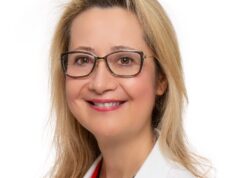
As part of newly published international guidelines on the prevention and treatment of pressure ulcers, it has been revealed that these wounds occur, primarily, due to the deformation and distortion of cells and tissues. Previously, it was understood that ischaemia—caused by the distortion of the vasculature—was the chief reason for the development of pressure ulcers but, as Amit Gefen (Tel Aviv University, Tel Aviv, Israel) has underlined, the availability of new scientific methods has offered a different perspective on the “damage cascade” of this type of wound.
Gefen presented a new approach to the problem of pressure ulcers at the Wounds UK annual conference (4–6 November 2019, Harrogate, UK) ahead of the guidelines’ release. Jointly published by the European Pressure Ulcer Advisory Panel (EPUAP), US-based National Pressure Ulcer Advisory Panel (NPUAP) and Pan Pacific Pressure Injury Alliance (PPPIA), these recommendations are said to “reflect global scientific knowledge” and provide “evidence-based” guidance for both prevention and treatment.
Speaking on the severity of pressure ulcers, and the impact they can have, Gefen stated: “You may know that pressure ulcers commonly affect the elderly, but this is not always the case. They can impact a wide number of different populations, ranging in age from the very young to the elderly, as well as people in an active phase of their life for whom a wound like this would be a disaster.
“From a health economics perspective, this is a scary situation, especially when you extrapolate our current predicament into the future. Developing countries are getting older and chronic diseases, which are a risk factor for pressure ulcers, are spreading, particularly diabetes. This is not going to get better on its own, so we need to do something today.”
Reviewing why pressure ulcers develop
While it is accepted that all pressure ulcers are caused by forces, which means that “whenever we are interacting with any kind of support surface, our tissues are distorted and deformed”, Gefen reminded those in attendance at Wounds UK that this deformation can happen when forces are not only static, but also dynamic.
“We have developed, over many years, several different models and systems to try and understand why these wounds happen,” Gefen explained. “Some work has been done on human subjects, mainly employing medical imaging modalities, and by performing an MRI scan in an unloaded configuration, when your buttocks are just about touching the chair, and fully loaded, when you are in full contact, we can actually quantify the extent of tissue deformation”.
However, in order to understand the impact of exposure to this kind of deformation at a cellular level, a substitute to a human subject is required. According to Gefen, science has now progressed sufficiently so that, instead of using animal models, living pieces of tissue can be cultured in a so-called ‘tissue engineering’ process; once developed, these samples can be utilised to determine the effects of cellular deformation and the viability of individual cells when exposed to sustained distortions.
Based on the results of experiments using cultured tissue, Gefen commented that “even with normal levels of oxygen or glucose, cells still die because of their exposure to sustained deformation”. This supports the idea that ischaemia, or a lack of adequate blood flow, is not a primary factor in the cell death mechanism, which has significant implications for how pressure ulcers should be treated and—if possible—prevented in the future.
Providing a further explanation as to how pressure ulcers really develop, as part of a damage cascade, Gefen said: “It happens because cells are structures, which have a certain capacity in supporting or bearing mechanical loads. Once that capacity has been exceeded, in terms of both the magnitude of the load and exposure time, the cell structure starts to fail. When deformation is sustained, skeleton structures in the cell (the cytoskeleton) start to fail, and as they are the supporting structure to the plasma membrane, which regulates all ions and molecules that may enter or leave the cell body, the transport capacity of the cell is now severely compromised.
“Once the integrity of the plasma membrane has been damaged, the cell will die very soon. At this point, the skeleton, which is the supporting structure for all of our vital organs, will begin to break down, and the same phenomenon happens at the scale of a cell. This is fundamentally different than the now outdated aetiological description of pressure ulcers or injuries, which has existed in the literature for many centuries. If the direct deformation damage happens within minutes, ischaemic damage takes a much longer time to develop.”
Inflammation was also highlighted by Gefen as a critically important factor which must be considered, because it is a component of a “snowball effect” that leads to pressure ulcers. After the first cells have died, due to exposure to sustained deformations, the inflammatory response is triggered. Once the body has sent white blood cells to the site of damage, the permeability of the vascular structures around this site also increases (to allow the immune cells to leave the vasculature). Consequently, blood vessels become leaky and oedema begins to develop.
In addition, the secretion of fluid from these vessels prompts the tissue to expand, but this often cannot happen because the soft tissues are trapped between the bone and the support surface. The inability of the tissue to expand in volume leads to an increase in interstitial pressure, causing further cell and tissue deformation and distortion. This means that even if the body part is offloaded after the initial deformation-injury, the damage will continue while that inflammation persists.
“We are looking at multiple processes that contribute to the damage, each of which worsens the situation in its own characteristic way and time point,” argued Gefen. “According to our new theory, cell and tissue damage accumulates due to three primary contributors, which are deformation, inflammation and ischaemia; the latter joins in last, typically, when the vasculature is distorted too (typically due to the oedema), affecting blood flow.”
Complications and potential solutions
Despite the much clearer understanding offered by the guidelines, as to how pressure ulcers develop, Gefen asserted that it is still incredibly difficult to predict, on a patient-to-patient basis, when a pressure ulcer will occur. He said: “If you think about each of these three components, all will contribute to the damage cascade at their own onset point and rate. If someone has a blood flow or cardiac issue, for example, they would be more susceptible to the ischaemic damage.”
The goal, as Gefen suggests, should be to postpone what can be a “horrific cascade” for these wounds to a point in the future that is “as far away as possible”. In terms of a first step, Gefen emphasised that the overall level of deformation must be lowered, which is very different to increasing blood flow alone, as this (potential ischemia) is just one derivative of the overall deformation state.
Looking ahead, the need for medical technologies that can lower the patient’s exposure to sustained tissue deformations, such as prophylactic dressings or positional overlays, was accentuated, as devices of this kind could potentially offer an effective primary prophylaxis. “These technologies and products, however,” as Gefen pointed out, “must be evaluated now according to a completely different protocol than what we used to follow when we looked at blood flow by itself”.
Gefen concluded: “With the bioengineering analysis methodologies and tools now available to us, we can review and revisit designs of medical devices to understand what we are possibly doing wrong and think about what we can do better. There are new technologies for instance which, instead of trying to offload and thereby concentrating the mechanical loads into very narrow regions, spread the loads as wide as possible. This achieves much better results, as demonstrated by computer models which give a quantitative and standardised measure of the exposure of tissues to loads, both at the skin surface and internally.
“We are now learning to control the environment of cells as well, so we can ensure that they function in an optimal way. An injury is always the product of a race between the body’s ability to repair and the progress of the damage in cells and then tissues. If we can help cells to repair themselves and their tissue micro-environment, we can introduce novel and ground-breaking methods to prevent pressure ulcers from becoming worse.”













